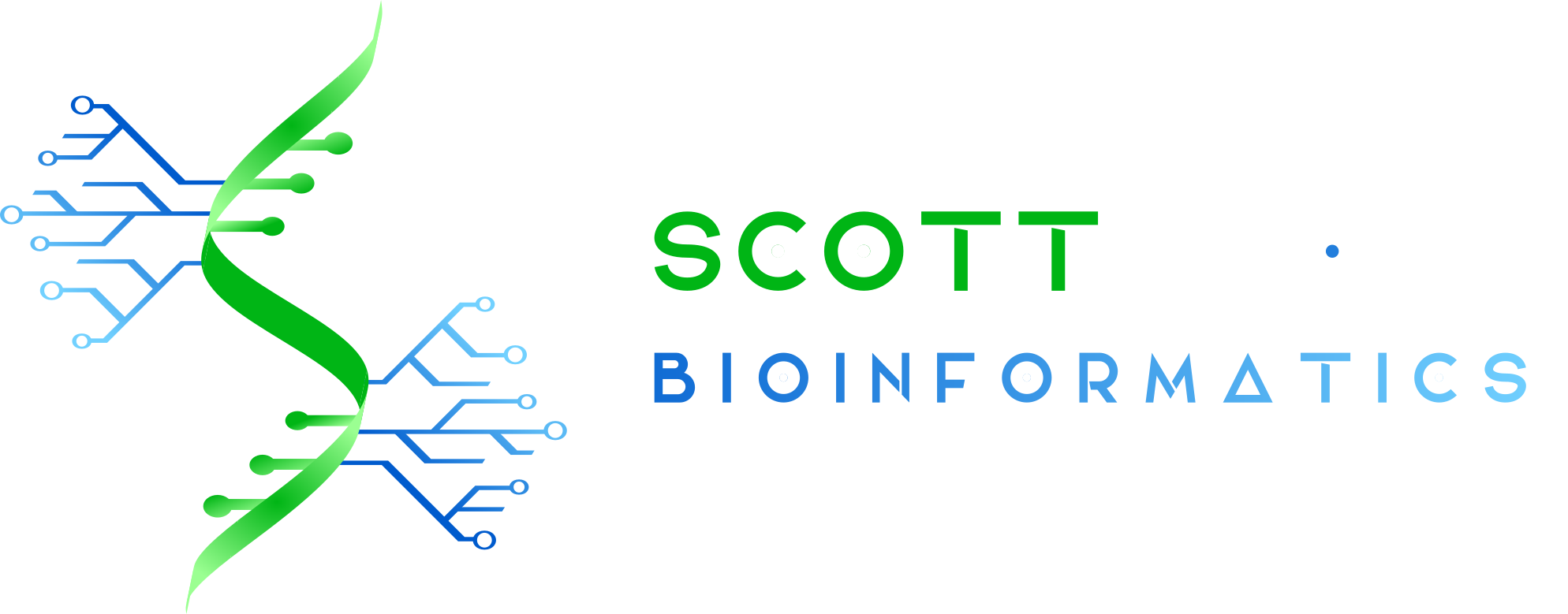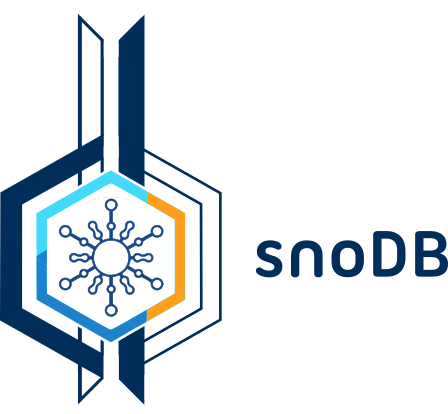About
snoDB is a database of human snoRNA containing data from other established databases , results from the literature and experimental data generated by the scott lab research group.
All data in snoDB can be viewed and queried in an interactive table with links to every individual snoRNA entry for a more focused overview of specific snoRNA.
For a detailed explanation on how to use the database and its numerous features, please see the
tutorial.
Clicking on the logo will always bring you back to snoDB's main page.
For a detailed explanation on how to use the database and its numerous features, please see the
tutorial.
Clicking on the logo will always bring you back to snoDB's main page.
Table
The table shows an overview of the total available data.
When more data than can fit the screen is made to appear in the table, holding SHIFT while rolling the mouse wheel (with the cursor hovering over the table) allows for horizontal scrolling.
Menu Bar
Holds four seemless buttons
Column Options
Clicking on Column Options unveils buttons that toggle the visibility of individual columns 
of column groups and of download options in tsv , bed
, bed  and excel
and excel  file formats based on currently visible or selected rows in table.
file formats based on currently visible or selected rows in table.
Color-coded column groups go as follow:
Genomic Location
Contains data on where snoRNA are located in the genome including Chromosomes, Start and End positions, and Strand.
External IDs
Links to snoRNA entry in external databases from where data were gathered.
Conservation
Conservation data were taken from snoRNA Atlas.
Orthologues link to snoRNA entries in snOPY and/or Ensembl when available.
Host Gene
snoRNA host genes correspond to genes with intronic sequences overlapping that of a snoRNA.
This group toggles the following columns: host name synonyms, host biotypes, start and end positions, and strand.
The Host symbol and synonyms columns can be simultaneously queried using the appropriate search box at the bottom of the table.
Targets
Most targets listed in these columns are predictions which have yet to be experimentally validated.
Targets are listed by biotype and all the columns can be searched using the Target search engine that can be made to appear at the bottom of the table
Ribosomal RNA or rRNA targets are listed as follow:
"ribosome subunit(28S, 18S or 5.8S)"_"Base modified(A, U, C or G)""position modified in the ribosome".
example: 28S_C1327
snoRNA and Host Expression
These two buttons individually toggle cell lines or tissues in which gene profiling was performed using TGIRT-Seq.
Expression data is in transcripts per million (TPM).
Expression data can be visualized in heatmaps using snoTHAW.
Lone columns
Lone columns belong to none of the aforementioned groups.
These include snoRNA: symbols, synonyms, length, DNA sequence, RNA sequence, and ID.
The ID column exists only to give a unique identifier to each snoRNA entry.
Advanced Search
This option reveals a set of color-coded search boxes which all support multiple space separated terms and regular expressions (tutorial examples).
Searches are performed upon pressing ENTER. Clearing the search bar clears the query from the table.
Global Search supports partial search terms while the others search boxes function on an exact match basis.
Reset Filters
Clears all filtering on the table.
Refresh Table
The state of the table (which searches are in effect, which columns are visible and selected) is saved upon refreshing the page.
This buttons refreshes the page AND restores the table to it's default state.
Individual snoRNA Pages
Clicking on a snoRNA symbol in the main Table leads to a page detailing all the information on that snoRNA entry contained in snoDB in a vertical tab format
The tabs are :
Gene Summary
Features the snoRNAs name along with basic information like box type, synonym and RNA sequence along with genomic position and conservation data that link to external resources when available.
External Links
Many different identifiers are used to refer to a same snoRNA and so this section aims to provide an easy way for users to obtain information on a given snoRNA no matter what identifier it may have on different platforms. To this effect, links to various sources are provided when available.
Associated Target(s)
Shows which targets, if any, a given snoRNA interacts with. Targets can be sorted by biotype, by enrichment in a certain tissue according to the Human Protein Atlas in the case of protein coding targets and by sources.
Links are provided where applicable and when available.
RNA-Seq Abundance Data
Displays transcriptomic data for the selected gene and its host in various cell lines and tissues. A brief overview of the pipeline used to acquire the expression data is available at the Experiment details page.
snoTHAW
Tool to visualize expression data pulled from snoDB in interactive heatmaps. snoTHAW has its own help and about page located on the main page below the table.
References
- Sharma, S., Yang, J., van Nues, R., Watzinger, P., Kötter, P., Lafontaine, D., … Entian, K. D. (2017). Specialized box C/D snoRNPs act as antisense guides to target RNA base acetylation. PLoS genetics, 13(5), e1006804. doi:10.1371/journal.pgen.1006804
- Falaleeva, M., Pages, A., Matuszek, Z., Hidmi, S., Agranat-Tamir, L., Korotkov, K., … Stamm, S. (2016). Dual function of C/D box small nucleolar RNAs in rRNA modification and alternative pre-mRNA splicing. Proceedings of the National Academy of Sciences of the United States of America.
- Shivendra Kishore, Stefan Stamm, (2006) The snoRNA HBII-52 Regulates Alternative Splicing of the Serotonin Receptor 2C, Science.
- Doe, C. M., Relkovic, D., Garfield, A. S., Dalley, J. W., Theobald, D. E., Humby, T., … Isles, A. R. (2009). Loss of the imprinted snoRNA mbii-52 leads to increased 5htr2c pre-RNA editing and altered 5HT2CR-mediated behaviour. Human molecular genetics.
- Scott, M. S., Ono, M., Yamada, K., Endo, A., Barton, G. J., & Lamond, A. I. (2012). Human box C/D snoRNA processing conservation across multiple cell types. Nucleic acids research.
- Sharma E, Sterne-Weiler T, O'Hanlon D, Blencowe BJ. (2016). Global Mapping of Human RNA-RNA Interactions, Molecular Cell.
- Patterson, D. G., Roberts, J. T., King, V. M., Houserova, D., Barnhill, E. C., Crucello, A., … Borchert, G. M. (2017). Human snoRNA-93 is processed into a microRNA-like RNA that promotes breast cancer cell invasion. NPJ breast cancer.
- Cui L, Nakano K, Obchoei S, Setoguchi K, Matsumoto M, Yamamoto T, Obika S, Shimada K, Hiraoka N. (2017). Small Nucleolar Noncoding RNA SNORA23, Up-Regulated in Human Pancreatic Ductal Adenocarcinoma, Regulates Expression of Spectrin Repeat-Containing Nuclear Envelope 2 to Promote Growth and Metastasis of Xenograft Tumors in Mice, Gastroenterology.
- Zhong, F., Zhou, N., Wu, K., Guo, Y., Tan, W., Zhang, H., … Zhang, H. (2015). A SnoRNA-derived piRNA interacts with human interleukin-4 pre-mRNA and induces its decay in nuclear exosomes. Nucleic acids research.
- Deschamps-Francoeur, G., et al. (2014) Identification of discrete classes of small nucleolar RNA featuring different ends and RNA binding protein dependency, Nucleic Acids Res, 42, 10073-10085.
- Gumienny, R., et al. (2017) High-throughput identification of C/D box snoRNA targets with CLIP and RiboMeth-seq, Nucleic Acids Res, 45, 2341-2353.
- Kehr, S., et al. (2014) Matching of Soulmates: coevolution of snoRNAs and their targets, Molecular biology and evolution, 31, 455-467.
- Krogh, N., et al. (2016) Profiling of 2'-O-Me in human rRNA reveals a subset of fractionally modified positions and provides evidence for ribosome heterogeneity, Nucleic Acids Res, 44, 7884-7895.
- Boivin, Vincent et al. “Simultaneous sequencing of coding and noncoding RNA reveals a human transcriptome dominated by a small number of highly expressed noncoding genes.” RNA, (2018)
- Boivin, Vincent et al. Reducing the structure bias of RNA-Seq reveals a large number of non-annotated non-coding RNA.
- Deschamps-Francoeur, Gabrielle et al. CoCo: read assignment correction for embedded and multimapped genes, Bioinformatics, (2019).
- Nottingham, R.M., Wu, D.C., Qin, Y., Yao, J., Hunicke-Smith, S. and Lambowitz, A.M. (2016) RNA-seq of human reference RNA samples using a thermostable group II intron reverse transcriptase. RNA.
- Lestrade, L. and Weber, M.J. (2006) snoRNA-LBME-db, a comprehensive database of human H/ACA and C/D box snoRNAs, Nucleic Acids Res, 34, D158-162.
- Yoshihama, M., Nakao, A., & Kenmochi, N. (2013). snOPY: a small nucleolar RNA orthological gene database. BMC
- Jorjani* H, Kehr* S, Jedlinski DJ, et al. (2016) An updated human snoRNAome.Nucleic Acids Research.
- Aken, B.L., et al. (2017) Ensembl 2017, Nucleic Acids Res, 45, D635-D642.
- The RNAcentral Consortium, (2018) RNAcentral: a hub of information for non-coding RNA sequences, Nucleic Acids Research.
- Pruitt, K. D., Tatusova, T., & Maglott, D. R. (2007). NCBI reference sequences (RefSeq): a curated non-redundant sequence database of genomes, transcripts and proteins. Nucleic acids research
- Gong J, Shao D, Xu K, et al. RISE: a database of RNA interactome from sequencing experiments. Nucleic Acids Res. 2017.
- Nawrocki, E.P., et al. (2015)Rfam 13.0: shifting to a genome-centric resource for non-coding RNA families, Nucleic Acids Res, 43, D130-137.
- Yates, B., et al. (2017) Genenames.org: the HGNC and VGNC resources in 2017, Nucleic Acids Res, 45, D619-D625.




